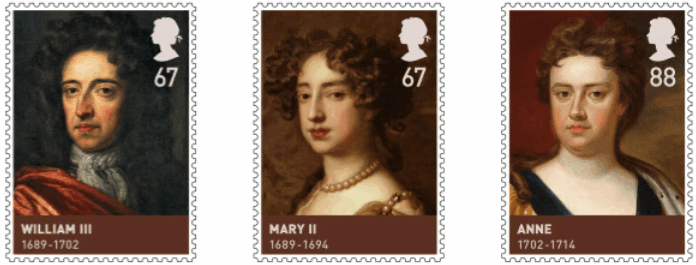The House of Stuart -
Great Britain stamps 15 June 2010, from Norvic Philatelics
Norvic Philatelics - GB New
Stamps and Special Postmarks
The House of Stuart - 15 June
2010 - stamps and miniature sheet
Two sets of Kings &
Queens stamps will be issued in 2010. The House of Stuart is
the fourth in the series, following on from the Scottish House
of
Stewart issued in March,
The first in the series was the Houses
of
Lancaster and York, and the
second was the House of
Tudor.
With no direct descendants,
Elizabeth became the last monarch of the House of Tudor and King James
VI of
Scotland acceded to the throne of England. This created The
Union of the Crowns which brought England and Scotland under one
monarch. James was the first cousin (twice removed) of
Elizabeth and he was also the great grandson of Henry VIII’s
sister Margaret Tudor who married James IV of Scotland. As
the first of the Stuart Kings of England, James VI/I is the
only monarch to feature in two sets of the Kings and Queens
stamps. This, the
fourth in the Kings and Queens series, looks at the Kings and Queens
from James I up until the death of Queen Anne in 1714.
|
|
1st
class: James I
(1603-25) & Charles I (1625-1649);
60p
Charles II (1660-1685) & James II (1685-1688);
67p
William III (1689-1702) & Mary II (1689-1694)
88p
Queen Anne (1702-1714)
|
|
|
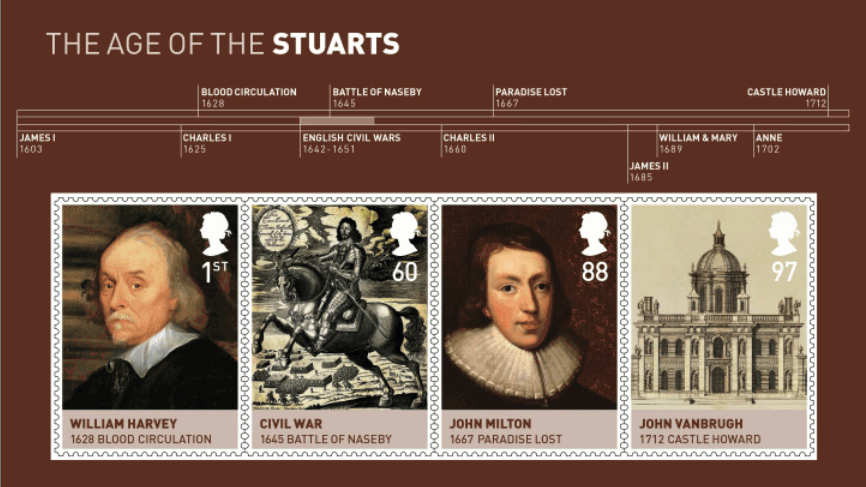
|
The MS takes a separate
look at the life and times of the age, featuring events and
individuals
from the reigns.
The
events & people featured are:
1st
class William
Harvey
(1578 – 1657) English physician;
60p
English Civil War, Battle
of Naseby
1645.
88p John
Milton (1608 - 1674), poet
author and civil servant during the Commonwealth period.
97p Castle
Howard,
designed by John
Vanbrugh (1664 - 1726)
The border design
features a timeline of the period.
|
| Acknowledgements:
James VI and I, c.1606,
John De Critz, reproduced by permission of the Trustees of
Dulwich
Picture Gallery; Charles I (1600–49), 1635, Sir Anthony Van
Dyck; Charles II (1630–85), c.1665–70, Sir Peter
Lely; Queen Anne
(1665–1714), c.1702–14,
Sir Godfrey Kneller (1646?–1723), all from The Royal
Collection © 2010, Her
Majesty Queen Elizabeth II; James
II
(1633–1701),
c.1686, Nicolas de Largillière
© National Maritime Museum, Greenwich, London; William III
(1650–1702), 1690, attributed to Sir Godfrey Kneller
© courtesy of the Bank of England; Queen Mary II, 1677, Peter
Lely © National Portrait Gallery, London; William
Harvey
portrait by an unknown
artist © Royal College of Physicians, London; His Excellencie
Sr Thomas Fairfax K, Generall of the forces raised by the
Parliament,
1647, Edward Bower © Trustees of the British Museum; John
Milton portrait by unknown artist, c.1629 © National Portrait
Gallery, London; Castle Howard, Yorkshire: elevation of entrance
front
from Colen Campbell’s Vitruvius Britannicus (London, 1715)
© RIBA Library Drawings Collection |
Background
on the stamps
1st
Class – James I (1603 - 1625) James
became King of Scots as James VI on 24 July 1567, when he was just
thirteen months old, succeeding his mother Mary, Queen of Scots.
Regents governed during his minority, which ended officially in 1578,
though he did not gain full control of his government until 1581. On 24
March 1603, as James I, he succeeded the last Tudor monarch of England
and Ireland, Elizabeth I, who died without issue. He then ruled
the England, Scotland, and Ireland for 22 years, often using
the title King of Great Britain, until his death at the age of 58.
Under James, the "Golden Age" of Elizabethan literature and drama
continued, with writers such as William Shakespeare, John Donne, Ben
Jonson and Sir Francis Bacon contributing to a flourishing literary
culture. James himself was a talented scholar, the author of works such
as Daemonologie (1597), True Law of Free Monarchies (1598), and
Basilikon Doron (1599). Sir Anthony Weldon claimed that James had been
termed "the wisest fool in Christendom", an epithet associated with his
character ever since.
1st Class –
Charles I (1625-1649) The
second son of James VI of Scots and I of England, was King of England,
Scotland and Ireland from 27 March 1625 until his execution. Charles
famously engaged in a struggle for power with the Parliament of
England. He was an advocate of the divine right of kings.
Many of his English subjects opposed his actions which, particularly in
relation to interference in the English and Scottish Churches, and the
levying of taxes without parliamentary consent, grew to be seen as
those of a tyrannical absolute monarch.
His last years were marked by the English Civil War, in which he fought
the forces of the English and Scottish Parliaments, which challenged
his attempts to augment his own power, and the Puritans, who were
hostile to his religious policies and supposed Catholic sympathies.
Charles was defeated in the First Civil War (1642–45), after
which Parliament expected him to accept its demands for a
constitutional monarchy. He instead remained defiant by attempting to
forge an alliance with Scotland and escaping to the Isle of Wight. This
provoked the Second Civil War (1648–49) and a second defeat
for Charles, who was subsequently captured, tried, convicted, and
executed for high treason. The monarchy was then abolished and a
republic called the Commonwealth of England, also referred to as the
Cromwellian Interregnum, was declared.
60p
– Charles II (1660-1685) The
Parliament of Scotland proclaimed Charles II king on 5 February 1649 in
Edinburgh. He was crowned King of Scotland at Scone on 1 January 1651.
Following his defeat by Cromwell at the Battle of Worcester on 3
September 1651, Charles fled to mainland Europe and spent the next nine
years in exile in France, the United Provinces and the Spanish
Netherlands.
A political crisis following the death of Cromwell in 1658 resulted in
Charles being invited to return and assume the throne in what became
known as the Restoration. Charles II arrived on English soil on 27 May
1660 and entered London on his 30th birthday, 29 May 1660. After 1660,
all legal documents were dated as if Charles had succeeded his father
in 1649. Charles was crowned King of England and Ireland at Westminster
Abbey on 23 April 1661.
Charles was popularly known as the Merrie Monarch, in reference to both
the liveliness and hedonism of his court and the general relief at the
return to normality after over a decade of rule by Oliver Cromwell and
the Puritans. Charles's wife, Catherine of Braganza, bore no children,
but Charles acknowledged at least 12 illegitimate children by various
mistresses.
60p
– James II (1685-1688) James
was King of England and Ireland as James II, and Scotland as James VII.
He was the UK’s last Catholic monarch. Increasingly Britain's
political and religious leaders opposed him as too pro-French, too
pro-Catholic, and too much of an absolute monarch. When he produced a
Catholic heir the tension exploded and the leaders called on William of
Orange (his son in law) to land an invasion army from the Netherlands.
James fled England (and thus abdicated) in the Glorious Revolution of
1688. He was replaced by William of Orange who became king as William
III, ruling jointly with his wife (James's daughter) Mary II. Thus
William and Mary, both Protestants, became joint rulers in 1689. James
made one serious attempt to recover his crowns, when he landed in
Ireland in 1689 but, after his defeat at the Battle of the Boyne in
1690, James returned to France. He lived out the rest of his life as a
pretender at a court sponsored by his cousin and ally, King Louis XIV.
67p
– William III (1689-1702) William
III was a sovereign Prince of Orange by birth. From 1672 he governed as
Stadtholder William III of Orange over Holland, Zeeland, Utrecht,
Guelders, and Overijssel of the Dutch Republic. From 1689 he reigned as
William III over England and Ireland and as William II over Scotland.
He is informally known in Northern Ireland and Scotland as "King
Billy". A member of the House of Orange-Nassau, William won the
English, Scottish, and Irish crowns following the Glorious Revolution,
in which his uncle and father-in-law James II was deposed. In the
British Isles, William ruled jointly with his wife, Mary II, until her
death on 28 December 1694. Popular histories usually refer to the joint
reign as that of "William and Mary".
67p
– Mary II (1689-1694) Mary
II reigned as Queen of England, Scotland, and Ireland from 1689 until
her death. Mary, a Protestant, came to the thrones following the
Glorious Revolution, which resulted in the deposition of her Roman
Catholic father, James II and VII. Mary reigned jointly with her
husband and first cousin, William III, who became the sole ruler of
both countries upon her death in 1694. Mary, the blood sovereign,
wielded less power than William during the parts of her reign when
William remained in England, ceding most of her authority to her
husband, though he heavily relied on her. She did, however, govern the
realms alone when William was engaged in military campaigns abroad,
proving herself to be a powerful, firm, and effective ruler. She was
very active in the Church of England, which she ruled as its Supreme
Governor. Though she shared the post with her husband, she largely
exercised its power alone.
88p
– Anne (1702-1714) Anne
became Queen of England, Scotland and Ireland on 8 March 1702. Her
Catholic father, James II and VII, was deemed by the English Parliament
to have abdicated when he was forced to retreat to France during the
Glorious Revolution of 1688/9; her brother-in-law and her sister then
became joint monarchs as William III Mary II.
On 1 May 1707, under the Acts of Union 1707, England and Scotland were
united as a single sovereign state, the Kingdom of Great Britain. Anne
became its first sovereign, while continuing to hold the separate crown
of Queen of Ireland and the title of Queen of France. Anne reigned for
twelve years until her death in August 1714. Anne was therefore the
last Queen of England and the last Queen of Scots.
Because she died without surviving issue, Anne was the last monarch of
the House of Stuart. She was succeeded by her second cousin, George I,
of the House of Hanover, who was a descendant of The Stuarts through
his maternal grandmother, Elizabeth, daughter of James I.
1st
Class – William Harvey
(1578–1657)
Fellow of the Royal College of Physicians, and personal physician to
both James I and Charles I, medical pioneer William Harvey was the
first person to give an accurate explanation of how the heart functions
and how blood moves around the body. His theories were published in An
Anatomical Study of
the Motion of the
Heart and of the Blood in Animals
in 1628.
60p
– The Battle of Naseby 1645
Naseby was the decisive battle of the English Civil War, the bloodiest
conflict in which England has ever taken part. It was fought on 14 June
1645, when the army of King Charles I attacked that of Parliament, led
by Sir Thomas Fairfax and Oliver Cromwell Parliament’s force
was
larger, and of equally good quality, so that the king’s was
destroyed, and he never raised another.
88p
– John Milton (1608–74)
One of the greatest poets of the 17th century, John
Milton recounted the Fall of Man in his most famous work, the
epic
poem Paradise
Lost, published
in ten books in 1667. A supporter of Oliver Cromwell, Milton also wrote
numerous pamphlets in favour of freedom of speech and Church reform,
and served the short-lived republic writing in defence of the
Commonwealth.
97p
– John Vanbrugh (1664–1726)
The son of a Chester merchant, John Vanbrugh was a notable dramatist
before becoming one of Britain’s greatest architects. His
first
significant work was Castle Howard in Yorkshire. Work began in1699 and
by 1712 the main body of the house was complete, combining classical
elegance with physical comfort. Later commissions included Blenheim
Palace.
Technical
details:
The
designs are by Atelier
Works, and the 27 x 37mm stamps are printed in lithography by Cartor
Security
Printers, Meacé, France, in sheets of 25/50, perf 14 x 14.
The miniature sheet is 123 x 70mm, also perf 14 x 14.
All images
are Copyright Royal Mail 2010.
Products
available:
Mint set
Mint miniature sheet
Presentation Pack (set & MS)
First day covers
Set of 11 Stamp Cards
Special
Postmarks
Postmarks available for the day of issue will be shown here.
these may not be to scale.
These
postmarks cannot be obtained after the date of issue.
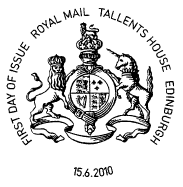
|
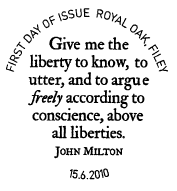 |
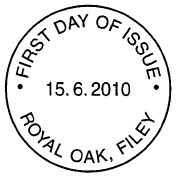
|
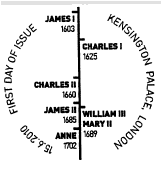 |
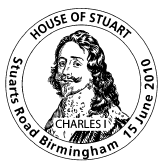
|
Ref FD1025
Philatelic Bureau Official Postmark |
Ref FD1026 Royal Oak,
Filey, Official Postmark - Give
me
the liberty to
know, to utter, and to argue freely according to conscience,
above all
liberties: John Milton. |
Ref FD1026N
Royal Oak, Filey non-pictorial postmark. |
Ref L11774 First day of
issue Kensington Palace Timeline postmark |
Ref M11781
Stuart Road, Birmingham - showing Charles I |
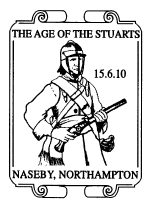
|
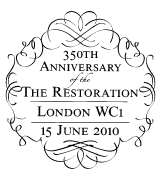 |
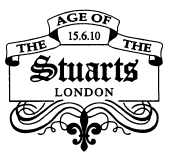
|
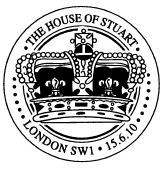
|
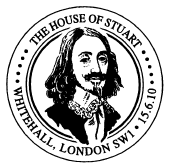
|
| Ref M11783
Naseby, Northampton |
Ref L11773 350th Anniv
of the Restoration, London WC1 |
Ref L11776 London |
Ref L11775 London SW1 |
Ref L11777
Whitehall, London SW1 |
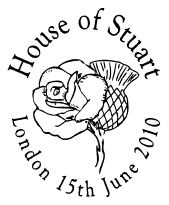 |
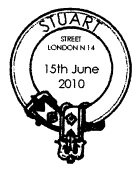 |
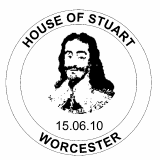 |
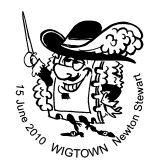
|
 |
| Ref L11770 London |
Ref L11779 - Stuart
Street London N14 |
Ref M11784 Worcester,
(showing Charles I) |
S11786 Wigtown, Newton
Stewart |
Ref: S4653
St Giles' Cathedral, Edinburgh |
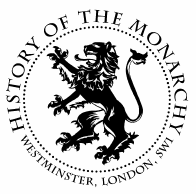 |
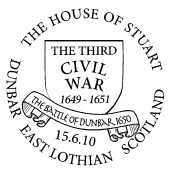
|
 |
|
|
Ref
L11551
History of the Monarchy, Westminster, London SW1 |
Ref
S11787
The Third Civil War 1649-1651, The Battle of Dunbar 1650, Dunbar
East
Lothian |
Ref
L4680
Windsor Castle |
|
|
If you would like to know when
this page is updated, please use the ChangeDetection panel next to the
stamp images.
If
you have any questions about these stamps please email
us.
NB: all
emails should be acknowledged in 1-2 days unless the office is closed.
If you do not receive an acknowledgement please email us from a
different address (eg hotmail, gmail).
This page updated 4 June
2010

